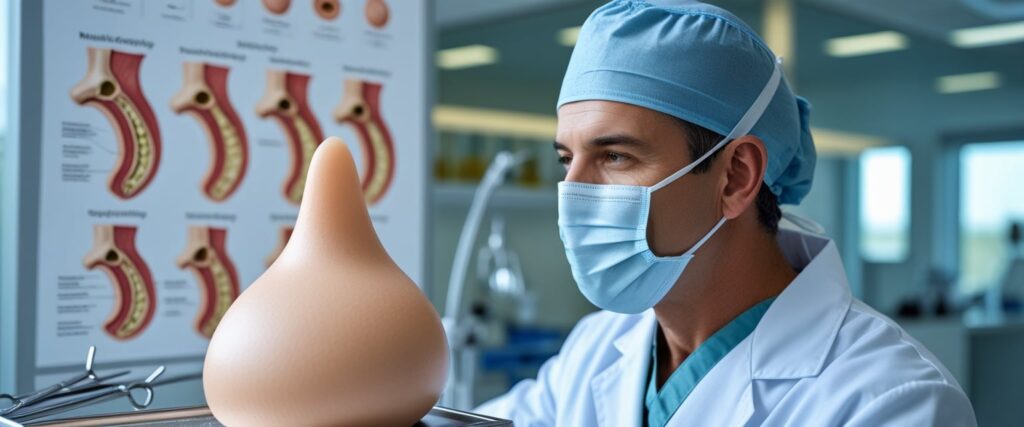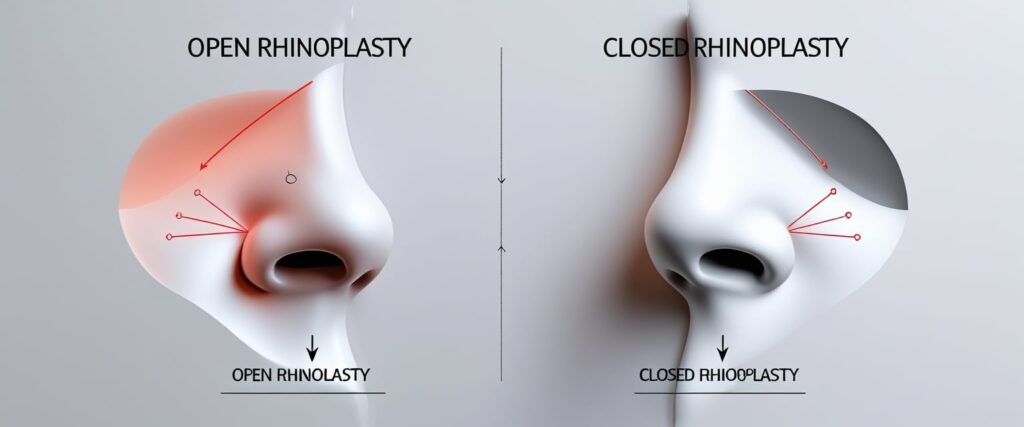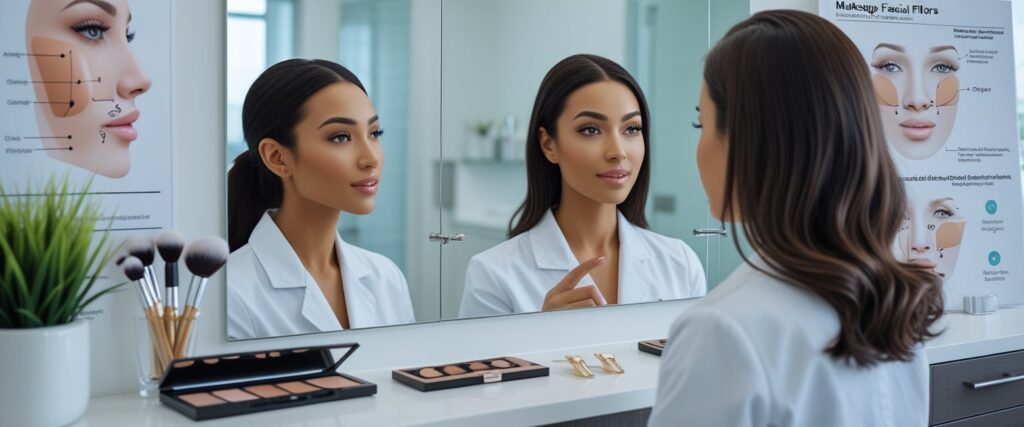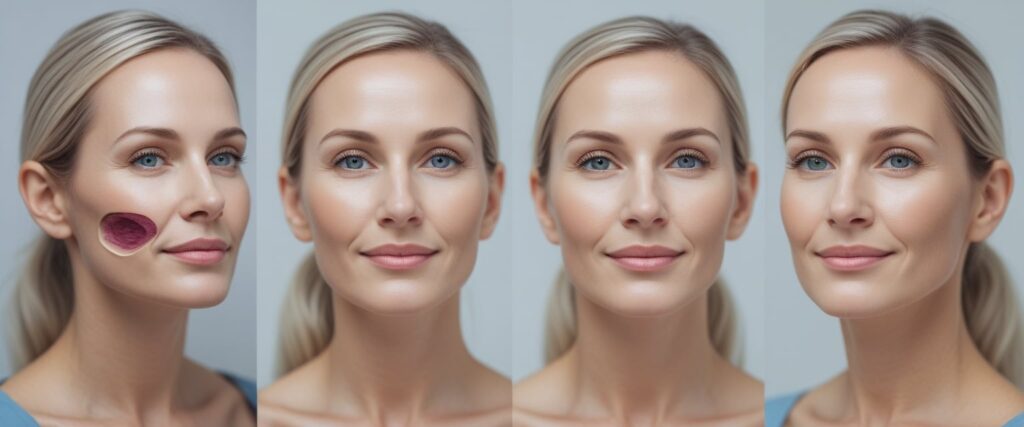Rhinoplasty Cost in 2025: 7 Key Facts You Must Know Before Surgery is essential before making such a big decision. From pricing to recovery, patients often feel overwhelmed with options, so breaking things down into clear facts helps set realistic expectations.
The first thing to know about Rhinoplasty Cost in 2025: 7 Key Facts You Must Know Before Surgery is the average cost range, which can vary widely—from $6,000 to $15,000 in the U.S. and $2,700 to $5,000 in Turkey. Next, one of the most important aspects of Rhinoplasty Cost in 2025: 7 Key Facts You Must Know Before Surgery is the factors that influence price, including the surgeon’s expertise, location, procedure type, anesthesia, and technology.
Another detail in Rhinoplasty Cost in 2025: 7 Key Facts You Must Know Before Surgery is the types of rhinoplasty open, closed, bulbous tip, ethnic, revision, and septoplasty—all with different pricing and recovery expectations.

Patients also want to know about specialized costs, such as tip-plasty or bulbous nose rhinoplasty, which is why Rhinoplasty Cost in 2025: 7 Key Facts You Must Know Before Surgery explains how complexity affects pricing. Another vital fact is insurance and financing, since cosmetic procedures are rarely covered, but functional rhinoplasty for breathing issues may be.
For those looking at less invasive options, Rhinoplasty Cost in 2025: 7 Key Facts You Must Know Before Surgery covers nonsurgical alternatives like liquid rhinoplasty and fillers. Finally, no guide to Rhinoplasty Cost in 2025: 7 Key Facts You Must Know Before Surgery would be complete without highlighting the recovery and healing timeline, which can take up to a year for final results.
Rhinoplasty Cost in 2025: 7 Key Facts You Must Know Before Surgery
Rhinoplasty remains one of the most requested cosmetic procedures, with many people seeking it for both aesthetic improvements and functional reasons. Whether the goal is to refine a bulbous nasal tip, address breathing issues through septoplasty, or explore less invasive options like nonsurgical rhinoplasty, the choices can feel overwhelming. The cost of rhinoplasty depends on factors such as surgeon expertise, procedure type, and location, with prices ranging widely from a few thousand to over ten thousand dollars.
Patients often compare open and closed rhinoplasty techniques, consider revision surgery if they are not satisfied with past results, or look into specialized procedures like ethnic rhinoplasty to preserve natural features. Options also vary by region, with popular destinations including rhinoplasty in Miami, Los Angeles, New York City, and even medical tourism in Turkey. Each choice comes with unique benefits, risks, and recovery expectations.

Healing and recovery play a major role in decision-making. Many want to know how long it takes to recover, when they can safely talk after surgery, and what the rhinoplasty recovery timeline looks like. From liquid rhinoplasty with minimal downtime to traditional surgery that requires weeks of healing, understanding these details helps set realistic expectations before moving forward.
Rhinoplasty Cost and Key Factors
Rhinoplasty pricing depends on the type of procedure, the surgeon’s expertise, and the geographic location. Costs can vary widely, especially for specialized surgeries like bulbous tip correction or ethnic rhinoplasty, which often require advanced techniques. Patients should also consider anesthesia fees, facility charges, and whether insurance may cover part of the expense.
Average Rhinoplasty Pricing
In the United States, the average cost of rhinoplasty ranges from $6,000 to $15,000. This figure usually covers the surgeon’s fee but does not always include anesthesia or surgical facility costs. According to the American Society of Plastic Surgeons, the base average in 2024 was about $7,600.
Prices differ by city. For example, rhinoplasty in New York City often falls between $8,000 and $15,000, while in Miami it may be closer to $6,000–$12,000. In Los Angeles, patients usually pay $7,500–$14,000. Internationally, countries like Turkey offer procedures for $2,700–$5,000, often performed by board-certified surgeons abroad.

The type of rhinoplasty also affects cost. Closed rhinoplasty is often less expensive than open rhinoplasty, while revision rhinoplasty can reach $20,000 or more because of its complexity.
Bulbous Nose Rhinoplasty Cost
A bulbous nose tip usually requires reshaping of the nasal cartilage. This is a more detailed procedure than simple nose reduction, so the price often falls in the mid-to-high range.
Tip-plasty, which focuses only on the nasal tip, typically costs $7,000–$15,000. If the surgery involves open rhinoplasty with structural changes, the price may increase to $8,500–$20,000.
Patients should expect higher fees when working with a highly experienced plastic surgeon, especially in large metropolitan areas. In cities like Beverly Hills, top surgeons may charge $15,000–$30,000 for advanced tip reshaping.

Because the nasal tip is delicate, selecting a board-certified plastic surgeon with experience in bulbous tip correction is important for both safety and results.
Factors Influencing Rhinoplasty Cost
Several elements determine the final price of a rhinoplasty procedure:
- Surgeon expertise: A board-certified plastic surgeon with extensive experience usually charges more.
- Geographic location: Costs are higher in cities like New York, Los Angeles, and Beverly Hills.
- Procedure type: Open rhinoplasty, revision rhinoplasty, and ethnic rhinoplasty often cost more due to complexity.
- Anesthesia and facility fees: These can add $1,000–$3,000 to the total.
- Technology used: Clinics offering 3D imaging or advanced surgical planning may charge higher rates.

In some cases, combining rhinoplasty with septoplasty for breathing issues can also affect the overall price.
Insurance Coverage and Financing
Most insurance plans do not cover cosmetic rhinoplasty. However, if the procedure corrects a deviated septum or other breathing problems, part of the cost may be covered as functional rhinoplasty. Patients should confirm coverage directly with their provider.
For those paying out of pocket, many surgeons offer financing plans. Options may include monthly payment programs or medical credit services.

Some patients travel abroad for lower prices, with rhinoplasty in Turkey being a popular choice due to significantly reduced costs. While this can save money, it is important to verify the surgeon’s credentials and clinic accreditation before scheduling surgery.
Types of Rhinoplasty Procedures
Rhinoplasty is performed in different ways depending on the patient’s needs, nasal structure, and desired results. Techniques vary from structural reshaping to functional corrections, and each method carries its own benefits, limitations, and recovery expectations.
Open and Closed Rhinoplasty
Open rhinoplasty involves a small incision across the columella, the strip of skin between the nostrils. This approach gives the surgeon direct visibility of the nasal framework, making it useful for complex reshaping, revision cases, or major corrections. Patients may experience more swelling, but results are often highly precise.
Closed rhinoplasty uses incisions placed inside the nostrils, leaving no visible scar. It is usually chosen for minor adjustments such as small hump removal or tip refinement. Recovery is often faster, with less swelling compared to open rhinoplasty.
Comparison Table:
| Approach | Incision Location | Best For | Recovery | Scarring |
|---|---|---|---|---|
| Open Rhinoplasty | Across columella | Complex reshaping, revisions | 2–4 weeks swelling | Small, often faint |
| Closed Rhinoplasty | Inside nostrils | Minor adjustments | 1–2 weeks swelling | None visible |

Bulbous Nose Rhinoplasty Techniques
A bulbous tip occurs when the nasal tip looks wide, round, or lacks definition. Correcting this often requires reshaping or reducing the lower lateral cartilages. Surgeons may use suturing techniques, cartilage trimming, or grafting to create a more refined nasal tip.
This type of cosmetic rhinoplasty can be performed through open or closed methods, depending on the complexity. Open rhinoplasty usually provides better access for precise reshaping of thick cartilage or skin.

Patients seeking bulbous nose rhinoplasty often want a tip that looks narrower and more proportional to the rest of the face. While results are permanent, healing may take several months before the final definition is fully visible.
Ethnic Rhinoplasty Approaches
Ethnic rhinoplasty focuses on improving nasal appearance while preserving features tied to a patient’s cultural or ethnic identity. Techniques vary depending on nasal structure, such as lower bridge height, wider nostrils, or thicker skin.
Surgeons often use cartilage grafts to build up a flat bridge or refine the nasal tip. Alar base reduction may also be performed to narrow wide nostrils. The goal is to enhance balance without erasing natural characteristics.

Because these procedures require specialized skill, costs may be higher than standard rhinoplasty. Surgeons in cities like Miami and New York City often have extensive experience in ethnic rhinoplasty due to diverse patient populations.
Rhinoplasty and Septoplasty
Septoplasty is a functional procedure that corrects a deviated septum, which can cause breathing problems. When combined with rhinoplasty, both function and appearance are addressed in a single surgery.
During this combined surgery, the surgeon straightens the septum while also reshaping the outer nose. This may involve reducing a hump, refining the tip, or narrowing the bridge. Patients benefit from improved airflow along with cosmetic changes.

Recovery is similar to standard rhinoplasty, though swelling inside the nose may take longer to resolve. In some cases, insurance may cover the septoplasty portion if it is performed for medical reasons, while the cosmetic rhinoplasty remains an out-of-pocket expense.
Nonsurgical and Alternative Rhinoplasty Options
Minimally invasive procedures can reshape the nose without surgery, while other methods focus on subtle adjustments or non-medical alternatives. These options often appeal to patients who want quicker recovery, lower cost, or temporary changes instead of permanent surgical results.
Nonsurgical Rhinoplasty
Nonsurgical rhinoplasty uses injectable fillers to smooth bumps, lift the nasal tip, or improve symmetry. It does not involve cutting or altering bone and cartilage. The procedure usually takes less than an hour and provides immediate results.
Fillers like hyaluronic acid are most common. Results typically last 6 to 18 months depending on the product and the patient’s metabolism. While effective for contouring, this option cannot correct breathing issues or reduce the size of the nose.

Because filler is placed in a high-risk area with many blood vessels, patients should only see a board-certified injector. As explained by the American Society of Plastic Surgeons, nonsurgical rhinoplasty requires a skilled provider to avoid complications such as vascular injury.
Liquid Rhinoplasty
Liquid rhinoplasty is another name for a nonsurgical “liquid nose job.” It uses dermal fillers to temporarily change nasal shape. This approach is best for small dorsal humps, mild asymmetry, or a slightly drooping tip.
Unlike surgery, liquid rhinoplasty does not require anesthesia or long recovery. Patients often return to normal activity the same day. Results are visible immediately but fade over time as the filler dissolves.

The cost is lower than surgery, but repeat treatments are needed to maintain results. Clinics offering liquid rhinoplasty emphasize that it is a cosmetic-only solution. It cannot make the nose smaller or correct internal structural problems.
Rhinoplasty Nose Reduction
True nose reduction requires surgery, but some patients look for non-surgical ways to make the nose appear smaller. Fillers cannot reduce size, but they can balance proportions by smoothing irregularities or lifting the bridge. This creates the illusion of a smaller nose.
For patients who want actual reduction of bone or cartilage, surgical rhinoplasty remains the only option. A closed rhinoplasty approach may be used to minimize scarring and recovery time. Non-surgical methods work best for camouflage, not reduction.

A comparison of surgical vs non-surgical nose jobs from the Godek Center shows that surgery is permanent, while filler-based reshaping is temporary. Patients must decide whether they want long-term structural change or short-term contouring.
Non Rhinoplasty Alternatives
Not every patient wants surgery or filler. Some alternatives focus on appearance rather than structural change. Makeup contouring can highlight or shadow certain areas to make the nose look slimmer or straighter.
Nose shaping devices and clips are marketed online, but evidence for their effectiveness is limited. These tools may temporarily change soft tissue appearance, but they cannot alter bone or cartilage.

Other patients choose to avoid procedures altogether and focus on overall facial balance. For example, chin augmentation or cheek fillers can make the nose appear more proportional without touching the nose itself. Clinics like The Rhinoplasty Center note that such alternatives may satisfy patients who want subtle improvements without surgery.
Rhinoplasty Recovery and Results
Recovery from rhinoplasty involves swelling, bruising, and gradual changes in the nasal shape. Final results take time, as the nose continues to refine over several months before reaching its natural appearance.
Rhinoplasty Recovery Timeline
The first week usually brings the most swelling and bruising. Patients often wear a splint for about 7 days to protect the nose. During this stage, rest and head elevation help reduce discomfort.
By the second week, most external bruising fades. Many people feel ready to return to work or school if their activities are not physically demanding. Internal swelling, however, can persist.
Between weeks 3 and 4, swelling decreases by about half. Breathing improves, and the nasal tip begins to look more defined.

From 2 to 3 months, the nose appears more natural. By 6 to 12 months, most swelling resolves, and the final rhinoplasty results become visible. Some cases, such as bulbous nose rhinoplasty, may take longer to fully refine.
Healing Time of Rhinoplasty
Healing varies depending on the type of procedure. Closed rhinoplasty often has less swelling and a quicker recovery, while open rhinoplasty may take longer due to more extensive adjustments.
Most patients return to normal routines within 2 weeks. Light exercise is usually safe after 3 to 4 weeks, but contact sports should be avoided for several months.
Swelling in the nasal tip can linger longer than other areas. This is especially true for thick-skinned patients or those who undergo rhinoplasty nose reduction.

Full healing, including subtle refinements, often takes up to a year. Patience is important, as results continue to improve over time.
Talking After Rhinoplasty
Speaking is safe after rhinoplasty, but excessive talking in the first few days can increase swelling or discomfort. The nasal tissues are sensitive, and movement of the upper lip can affect the healing nose.
Patients are usually advised to keep conversations short during the first week. Smiling, laughing, or wide mouth movements may also feel uncomfortable.

By the second week, most people can talk normally without affecting recovery. Careful attention to these small habits helps protect the nasal tip and support smooth healing.
Revision Rhinoplasty Considerations
Revision rhinoplasty may be needed if results are unsatisfactory or if breathing issues remain. Surgeons recommend waiting at least 12 months before pursuing another procedure, as swelling must fully resolve first.
Common reasons for revision include asymmetry, scar tissue, or persistent nasal obstruction. The procedure is often more complex than the initial surgery.

Costs are typically higher than standard rhinoplasty, ranging from $10,000 to $20,000 according to rhinoplasty recovery guides. Choosing the best rhinoplasty surgeon with experience in revision cases is critical for achieving stable and natural-looking results.
Conclusion
Understanding Rhinoplasty Cost in 2025 is not just about the price. it’s about knowing what influences the expense, which procedure suits your needs, and how recovery will affect your lifestyle. From average pricing in the U.S. and Turkey to specialized procedures like tip-plasty or ethnic rhinoplasty, each choice impacts both your budget and your results.
For many patients, Rhinoplasty Cost in 2025 also depends on surgeon expertise, city of treatment, and whether they choose open, closed, or nonsurgical options. Financing and insurance considerations further shape the overall decision, especially when cosmetic and functional corrections overlap.
By reviewing the factors, costs, and recovery expectations, you can set realistic goals and avoid surprises along the way. Choosing a qualified surgeon and fully understanding Rhinoplasty Cost in 2025 ensures safer outcomes and more natural results.
Whether you’re exploring affordable medical tourism in Turkey or considering revision rhinoplasty in a major U.S. city, keeping these details in mind will help you make confident choices. Ultimately, Rhinoplasty Cost in 2025 is about more than numbers—it’s about investing in your appearance, health, and long-term satisfaction.
FAQ
Is septoplasty better than rhinoplasty?
Septoplasty and rhinoplasty are different procedures, so one isn’t necessarily “better” than the other. Septoplasty is performed to correct a deviated septum and improve breathing, while rhinoplasty reshapes the nose for cosmetic or functional reasons. If your main concern is breathing issues, septoplasty may be more suitable, but if you want to change the appearance of your nose, rhinoplasty is the right choice. Sometimes, both surgeries are combined for functional and aesthetic benefits.
What hurts more, septoplasty or rhinoplasty?
Both septoplasty and rhinoplasty involve some discomfort, but most patients report that rhinoplasty tends to cause more swelling and soreness because it involves reshaping the bone and cartilage of the nose. Septoplasty usually results in less visible swelling and is often considered less painful, focusing mainly on internal correction. Pain is generally manageable in both surgeries with prescribed medications, and recovery experiences vary from person to person.
Can I get septoplasty without rhinoplasty?
Yes, you can absolutely undergo septoplasty without rhinoplasty. Septoplasty is a functional surgery aimed at correcting breathing difficulties caused by a deviated septum, and it does not alter the outward appearance of the nose. Rhinoplasty, on the other hand, is optional and performed only if you also want to change the shape or look of your nose. Many patients choose septoplasty alone if their concern is purely medical.
Cost of rhinoplasty in India?
The cost of rhinoplasty in India varies depending on the city, hospital, surgeon’s expertise, and the complexity of the procedure. On average, rhinoplasty in India costs between ₹80,000 to ₹2,50,000. Cosmetic rhinoplasty is generally more expensive than functional correction, and if combined with septoplasty, the price may increase. India is considered a more affordable destination for rhinoplasty compared to many Western countries, with high-quality care available in major cities like Delhi, Mumbai, Bangalore, and Hyderabad.
Can rhinoplasty fix breathing problems too?
Yes, but only in certain cases. While rhinoplasty mainly reshapes the nose, it can correct structural issues such as collapsed nasal valves. For a deviated septum, septoplasty is more effective.
What is wide nose rhinoplasty?
Wide nose rhinoplasty narrows a broad nose by refining the nasal bridge and nostrils. It can be done using open or closed techniques, depending on the case complexity and patient goals.
Can rhinoplasty and septoplasty be done together?
Yes. Many patients combine both procedures to achieve improved breathing and cosmetic enhancement in a single surgery. This is often called a septorhinoplasty.
